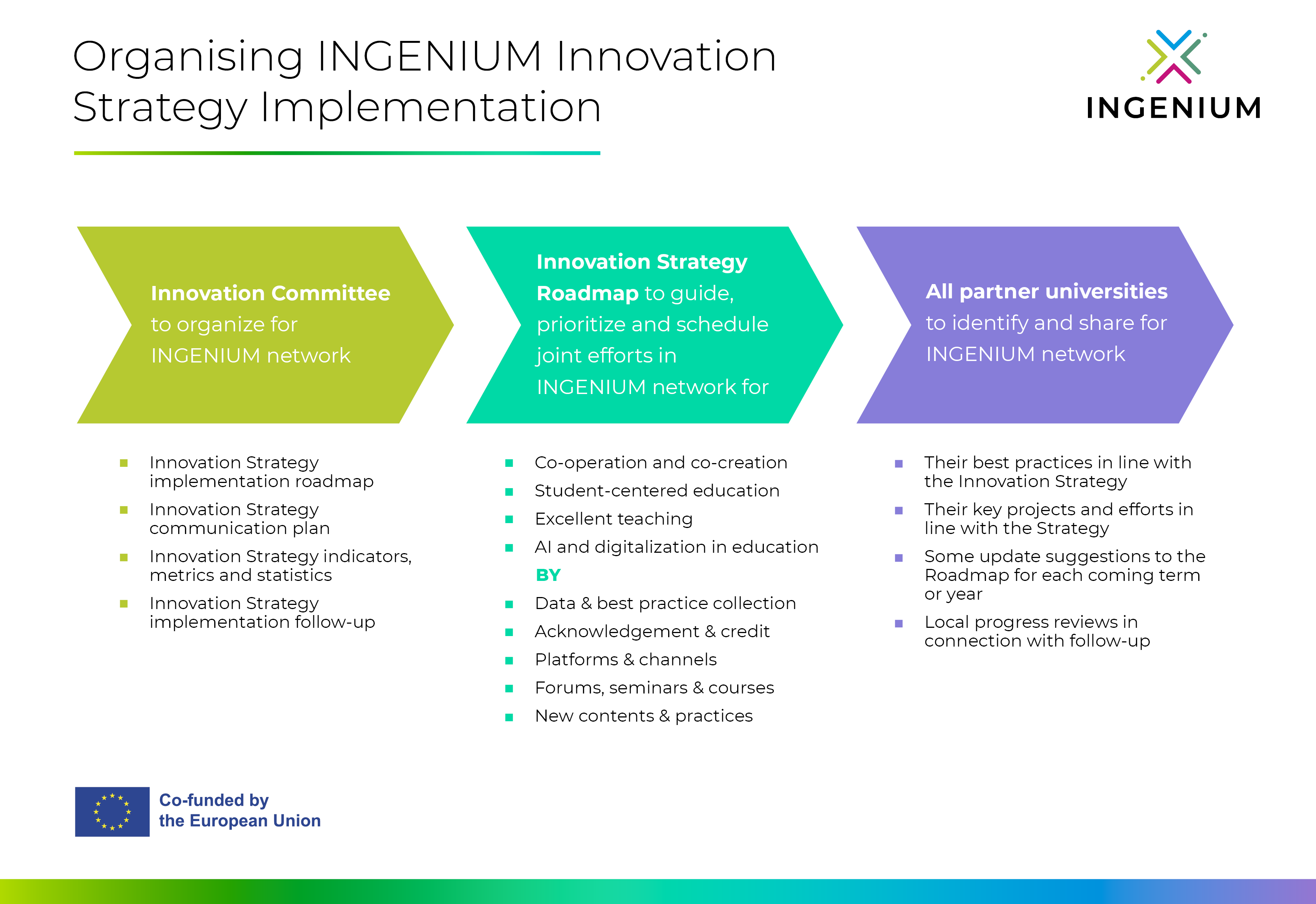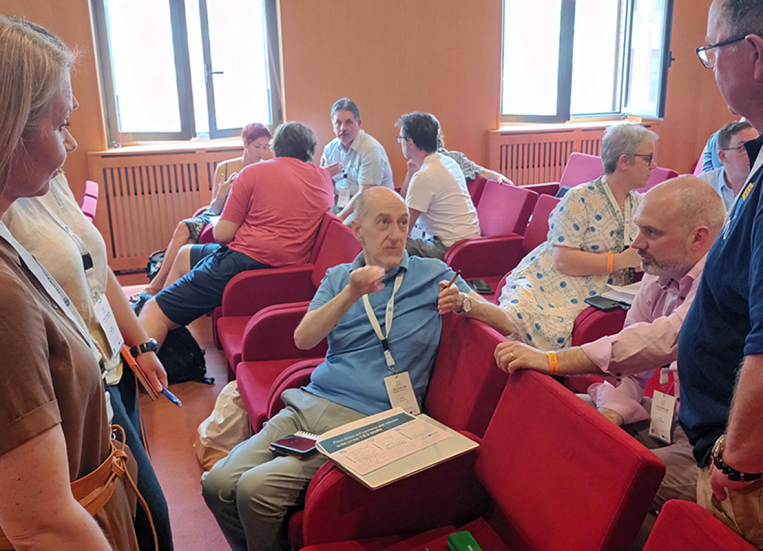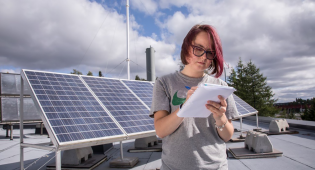Unleashing the Future: A Common Pedagogical Strategy for 10 European Universities
04.12.2023“Committed to forward-looking higher education for a changing world.”
As INGENIUM propels forward, it moves from embracing change to becoming the architect of change. With a resolute focus on innovation, this alliance is poised to redefine the higher education landscape for future generations.
Building a Common Pedagogical Innovation Strategy
In a bold leap forward for higher education, the South-Eastern Finland University of Applied Sciences and its nine partner universities of the INGENIUM alliance have embarked on a common journey toward innovative teaching and learning in Europe. This renewal
is a collaborative effort to transform higher education guided by a common pedagogical innovation strategy. Hopefully, this will lay the foundation for a common INGENIUM European campus. It champions student-centric education, forging deeper ties between research and teaching, and explores new methodologies for learning and teaching.
INGENIUM Innovation Strategy
The mission of the INGENIUM alliance is to share knowledge and learn together. We seek to enable each member of the network to offer high-quality study and qualification programmes with digital components which are shared within the INGENIUM Alliance. We have developed this common innovation strategy within the alliance to facilitate this goal. The innovation strategy comprises four key cornerstones that are the foundation for all our pedagogical practices. The Innovation Committee actively supports our mission by engaging students, acknowledging teachers, connecting with working life partners, and accelerating digitalization in education.

The first cornerstone of the strategy is student-centered education, which involves creating practical and systematic ways for students to be heard, involved, and engaged. This also includes assessing their needs, understanding their lives, and recognizing different student profiles. To enable flexibility and progress in studies, a wider variety of means will be developed to reach and learn the same relevant content.
The second cornerstone is Excellent teaching. To achieve this, we must define what excellent teaching is, enable teachers to deliver it, and support and lead them to meet the demands of pedagogical innovation. We can also recognize and acknowledge excellent teaching through evaluation, making it visible locally and internationally. Sharing best practices, research, content, materials, and methods and bringing teachers together for interdisciplinary interaction are important aspects of this cornerstone. This will foster a collaborative environment and encourage teachers to learn from one another, even across different language areas.
The third cornerstone is Co-operation and co-creation. To foster working-life interaction and cooperation, it is essential to create practical opportunities and intercultural channels that connect teachers, researchers, students, and working-life partners. One way to achieve this is by establishing multicultural, multidisciplinary forums, think tanks, and panels to discuss pressing societal issues. The results of these discussions can be published and used later for educational and research purposes.
The fourth cornerstone is AI and digitalization in education. It’s imperative to realize that using AI in teaching is inevitable. To make the most of this, we need to strengthen the AI and digital competences of both the staff and students. We can generate innovative education by organizing teams in which different professionals combine their pedagogic, digital, design, and other skills. This provides us with the opportunity to leverage both local and international networks, as well as external expertise for AI and digital needs in education.
In addition to the four strategic cornerstones, the Innovation Committee identified several underlying factors that must be considered when implementing the four cornerstones in the pedagogical renewal of each partner university. Attention must be paid to the internal motivation of the teachers and the students for lifelong learning. As responsible higher education institutions, we should engage students and teachers to work more closely to improve their conditions for learning. It is also essential to remove barriers to innovative interaction by bringing students and staff together.
Innovative education requires time and resources. The strategy emphasizes using new and advanced methods, channels, and platforms for involving, engaging, sharing, innovating, educating, and learning. Additionally, it is crucial to develop responsible metrics that can measure the processes of learning to learn and innovative higher education (QA).
Pioneering Pedagogy: The Impact of the Innovation Strategy
The INGENIUM Innovation Strategy is more than a mere roadmap; it is a strategic plan for a future of education that transcends the project’s initial three-year horizon. It lays out what we are doing, why, and how. In other words, it is a clear set of instructions that keeps things simple and easy to follow in the day-to-day tasks in INGENIUM. It champions student-centric education, forging deeper ties between research and teaching, and explores new methodologies for learning and teaching.
For more information, you can watch the INGENIUM Innovation Strategy introduction video here: https://youtu.be/h3TqQoSD1wg?si=USaqpzFlQRPJv8TT



































